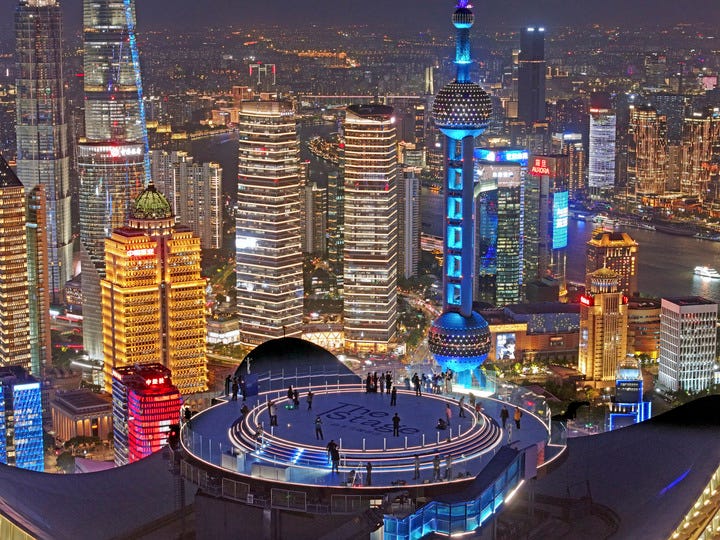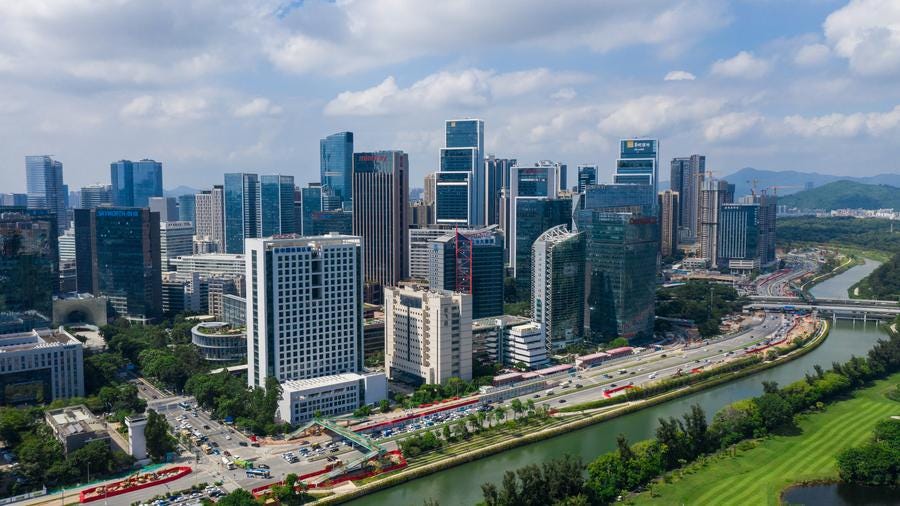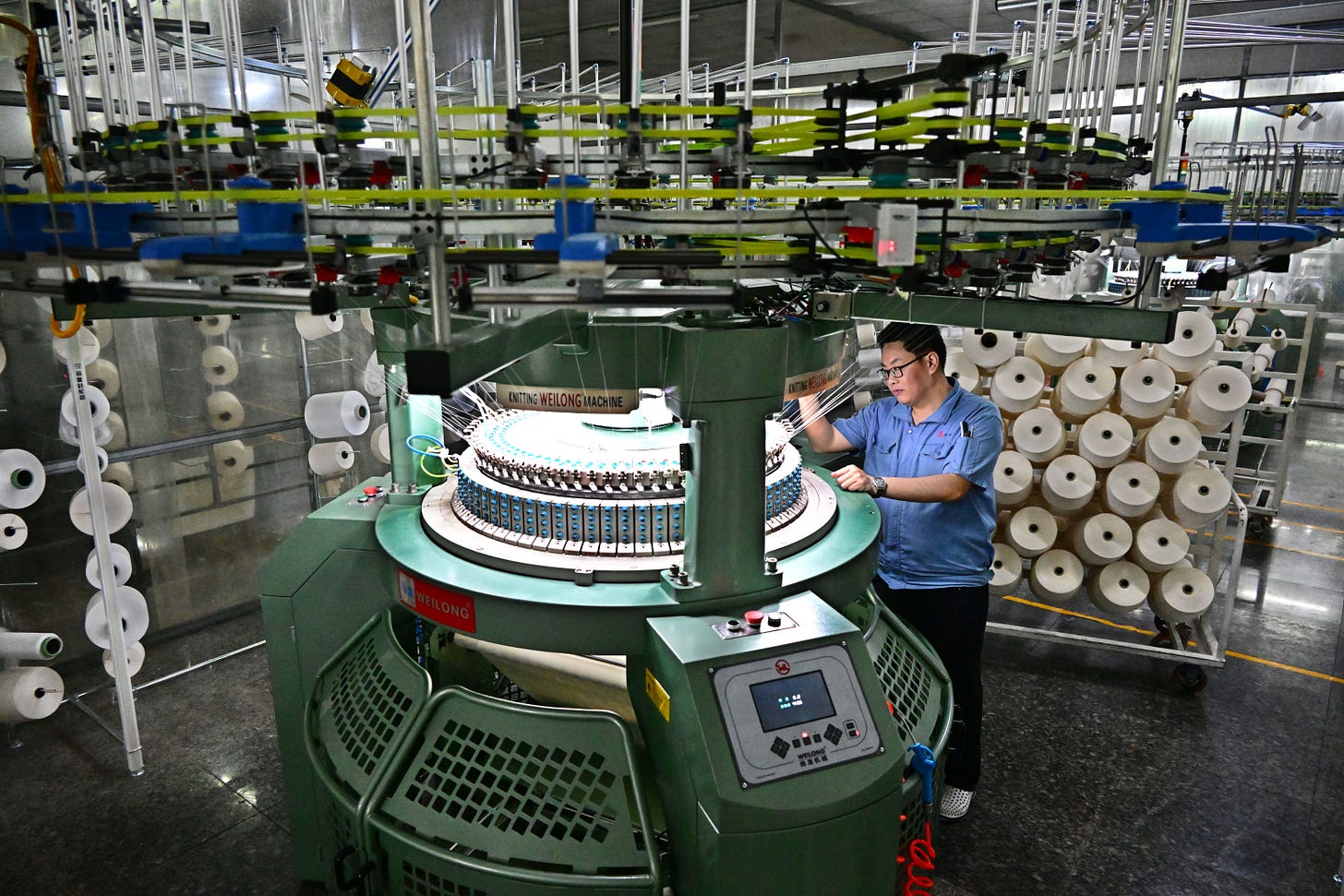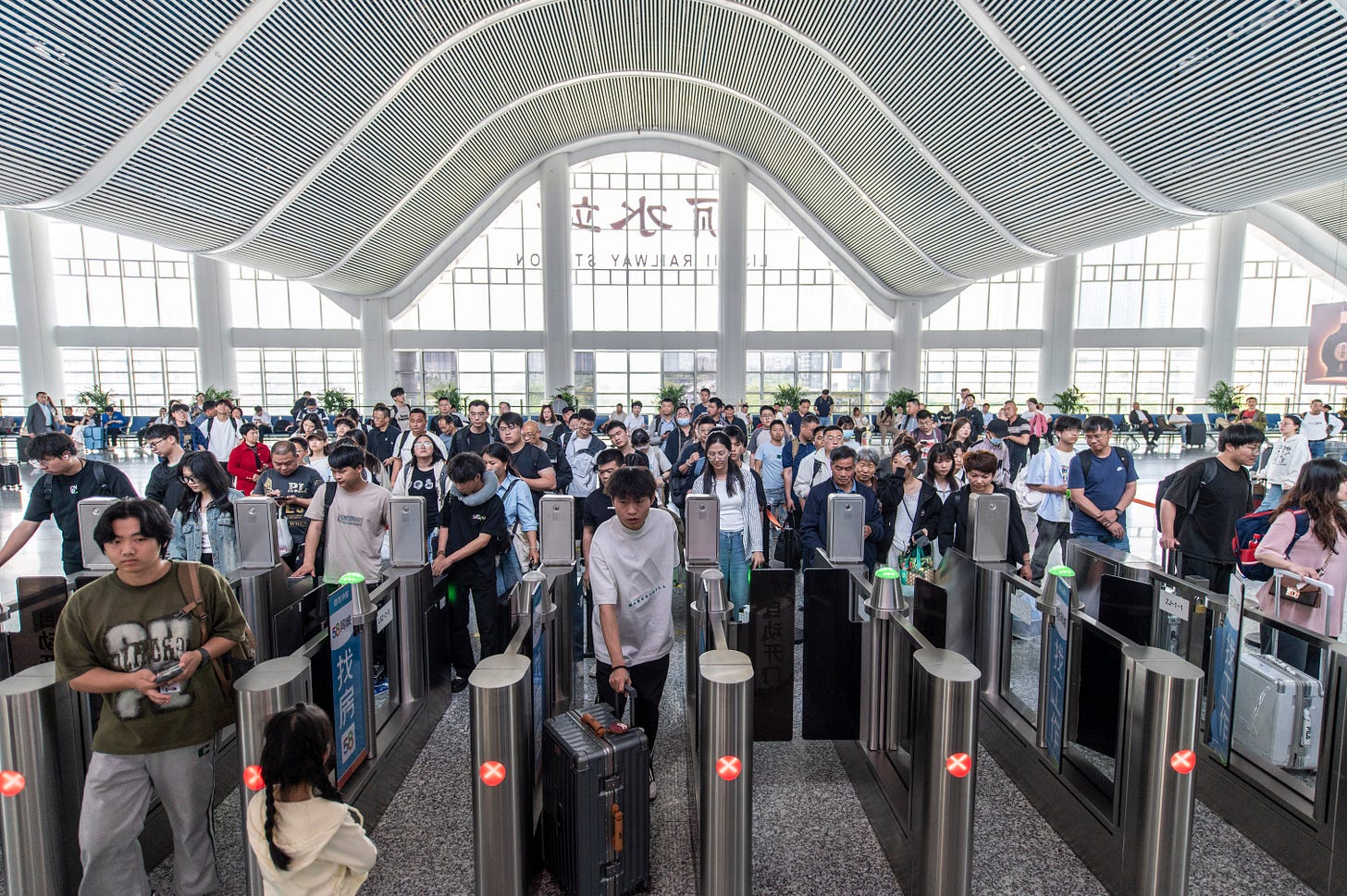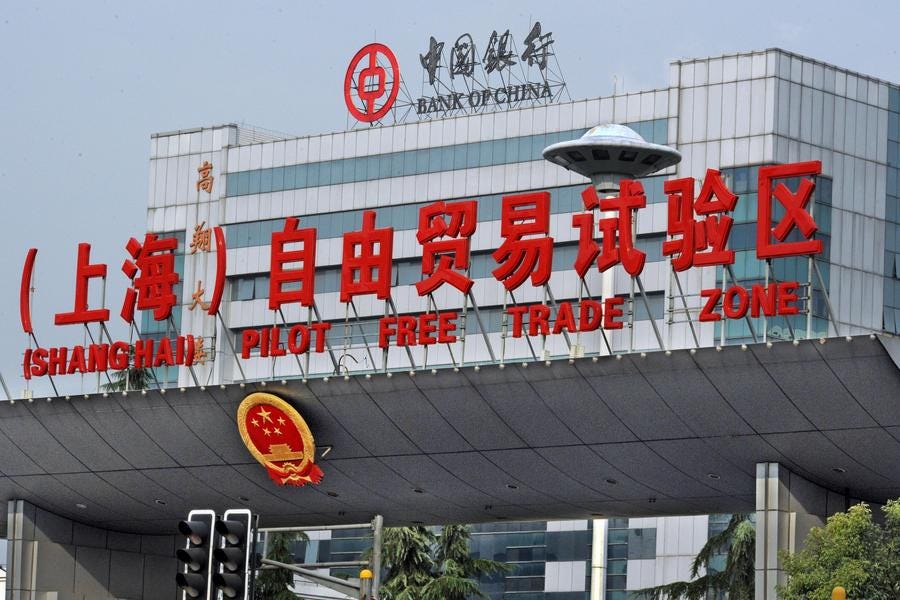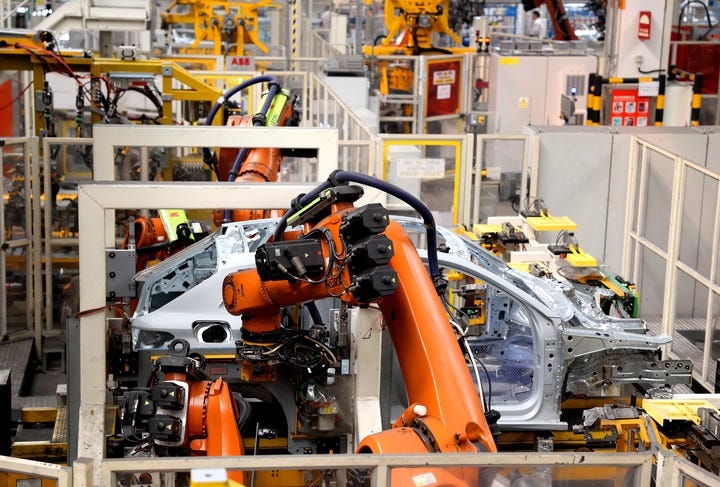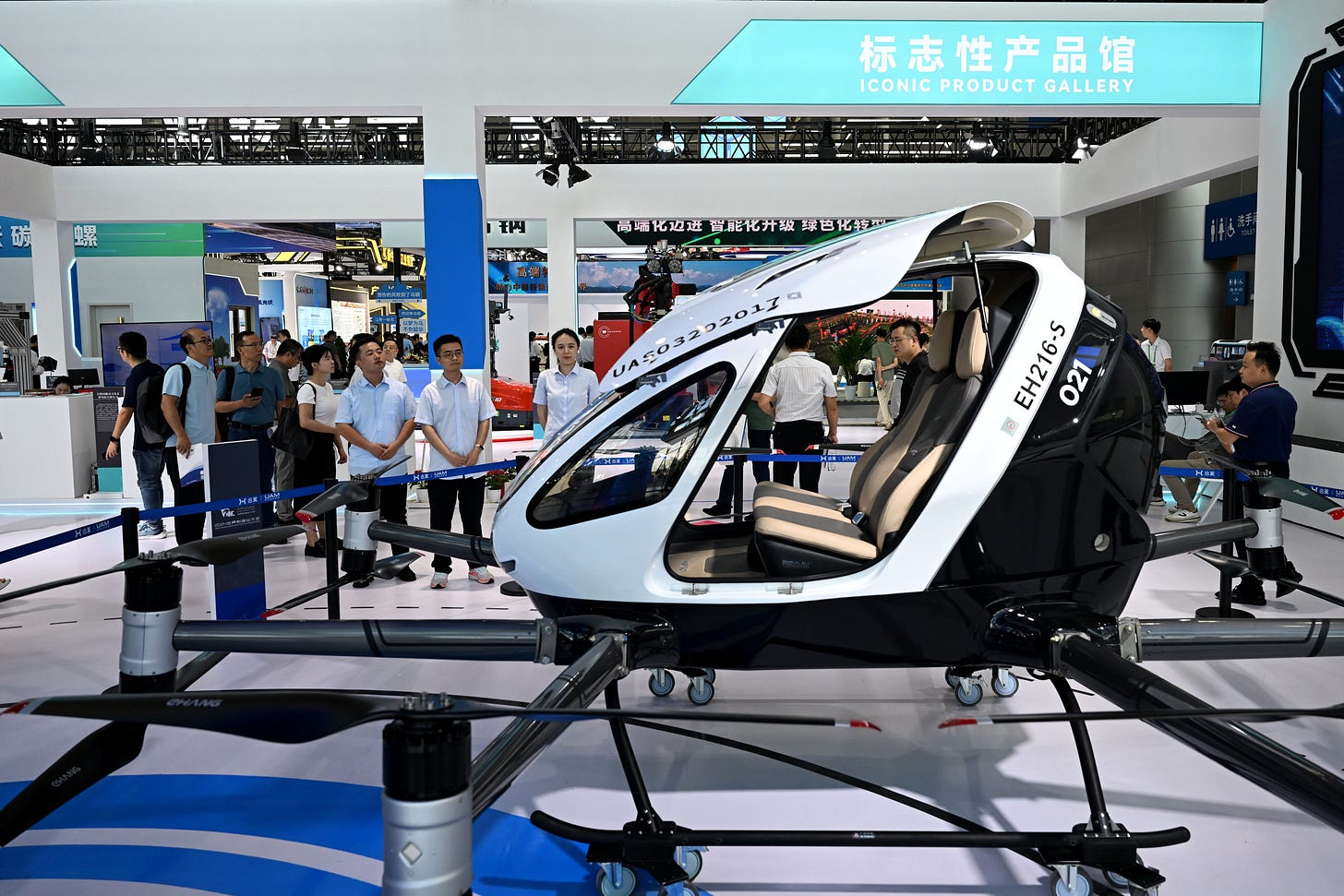Must-Read China Economic News (April 18- May 1)
China adopts private sector promotion law; cross-border travels expected to surge during May Day holiday; firms' Q1 industrial profits swing back to growth. Check out this latest Must-Read edition.
Greetings and welcome to the latest edition of Peking Ensight! We're thrilled to have you join us once again as we navigate the ever-evolving landscape of the Chinese economy.
⭐Under the Spotlight
China adopts law dedicated to promoting private sector
China's national lawmakers have voted to adopt the country's first fundamental law dedicated to promoting the private sector, underscoring support for a key part of the world's second-largest economy.
After over a year of legislative process, the private sector promotion law was passed on April 30 at a session of the Standing Committee of the National People's Congress. It will take effect on May 20, 2025.
Comprising 78 articles in nine chapters, the law covers such areas as fair competition, investment and financing promotion, scientific and technological innovation, regulatory guidance, service support, rights and interests protection and legal liabilities.
The law will further optimize the development environment for the private economy, ensure fair market competition for all types of economic entities, and foster the sound development of both the private sector and its practitioners.
Private enterprises have long been a key driving force behind China's economic ascendance, contributing more than 60 percent of GDP and 80 percent of urban employment. By the end of March 2025, the country's more-than-57-million registered private enterprises made up over 92 percent of all businesses in China.
China's policy support boosts private sector's development
China's private sector has forged ahead with steady expansion in the first quarter of 2025 as China reaffirms unswerving support for its growth amid challenges and difficulties.
Liu Min, deputy head of the private economy development bureau under the National Development and Reform Commission, China's top economic planner, said China's private sector has supported overall national economic growth with a solid performance in the first quarter of 2025.
Official data shows that in the first quarter of 2025, the value-added industrial output of private enterprises increased 7.3 percent year on year, outpacing the growth rate of all industrial enterprises; private investment grew 0.4 percent year on year, shifting from a decline in 2024. Notably, private investment in the manufacturing sector grew by 9.7 percent. Meanwhile, the import and export volume of private enterprises rose 5.8 percent in the first quarter.
Zhu Min, a member of the Senior Expert Advisory Committee of the China Center for International Economic Exchanges, said that a symposium -- attended by top Chinese leaders and representatives of private enterprises in February -- has conveyed the message that full support from all levels of government is to be provided to promote the sector's healthy development.
China expects 27% rise in cross-border travel for May Day holiday
China is expected to see an average of 2.15 million daily border crossings during the five-day May Day holiday, representing a 27 percent increase from last year, the National Immigration Administration has forecasted.
The May Day holiday is typically one of the busiest travel periods of the year. During the holiday, millions of Chinese travelers hit the road to visit family, explore domestic destinations, or venture abroad. This surge in travel provides a boost to the transportation, tourism, and retail sectors.
To welcome more international travelers, China has expanded visa-free policies to allow longer stays and wider travel within the country, simplified visa procedures, and introduced new conveniences such as instant tax refunds for departing visitors.
China has unilaterally extended visa-free entry to citizens of 38 countries and has also lengthened its visa-free transit policy for nationals of 54 countries to 240 hours. According to the latest data, 9.2 million foreign nationals entered China in the first three months of this year, a 40.2 percent increase from the same period last year. Visa-free entries accounted for 71.3 percent of this total.
China's SAIC Motor, Huawei to co-develop EV brand
Shanghai-based SAIC Motor Corporation Limited on April 29 signed an agreement to establish a car manufacturing plant and supporting vehicle battery facilities for its new electric vehicle (EV) brand co-developed with Huawei in the Lingang new area of the China (Shanghai) Pilot Free Trade Zone in Shanghai.
The plant is designed to have an annual production capacity of about 250,000 vehicles in its early stages, according to SAIC Motor. The move follows a partnership formed in February between SAIC Motor and Huawei with the signing of a deep cooperation agreement to jointly launch the SAIC Shangjie brand.
SAIC Shangjie vehicles will be equipped with Huawei's smart mobility solutions, said Zhu Yong, head of the SAIC ShangJie business. The cars will target the middle to high-end market, catering mainly to households and young white collar workers. The first model under the brand, an SUV priced at around 200,000 yuan (about 27,800 U.S. dollars), is expected to hit the market this autumn.
It will be available in both pure electric and extended range versions. The pure EV model can offer a range of over 600 km on a single charge.
Xinjiang reports over 44 million tourist visits in Q1
China's Xinjiang Uygur Autonomous Region received more than 44 million tourist visits in the first quarter (Q1) of 2025, up 9 percent year on year, according to the regional culture and tourism department.
During the period, local cultural and tourism authorities at all levels launched multiple initiatives to boost the cultural sector and the tourism market. Tourist spending during the period reached about 6.84 billion U.S. dollars, a year-on-year increase of nearly 13 percent.
More than 21,600 public cultural activities were held in Q1. The 2025 Xinjiang Cultural Tourism Industry Trade Expo and the 6th Xinjiang Spring Tourism Expo held in March also attracted over 2,000 exhibitors and 45,000 visitors.
In May, more than 200 cultural and tourism events will be held across Xinjiang. Nearly 300 promotional policies, including discounted or free entrance tickets and special offers on dining and accommodation, will be introduced to further stimulate consumption and boost market vitality.
⭐On U.S. tariffs, controversial port fees
China hopes U.S. will foster stable, predictable business environment
China hopes the United States will heed the voices of businesses and foster a stable and predictable environment for normal trade and investment activities, the commerce ministry has said.
A ministry spokesperson made the remarks on April 29 in response to media reports claiming that China has stopped accepting Boeing jet deliveries.
"Many companies have been unable to conduct normal trade and investment activities, and both Chinese airlines and Boeing are severely affected," the spokesperson said, adding that China is willing to continue supporting normal business cooperation between Chinese and U.S. companies.
China and the United States have maintained long-standing, mutually beneficial cooperation in the civil aviation sector, which has significantly promoted bilateral trade and people-to-people exchanges, the spokesperson said.
However, the United States wielding the tariff stick has severely disrupted the stability of global industrial and supply chains and disturbed the international aviation market, the spokesperson said.
China urges U.S. to stop threats, pressure for tariff negotiations
If the U.S. wants to resolve the tariff-related issues through dialogue and negotiation, it should cease its threats and pressure, Chinese foreign ministry spokesperson Guo Jiakun has said.
Guo made the remarks at a regular press briefing on April 29 in response to U.S. Treasury Secretary Scott Bessent's comments on the tariff issue with China. According to media reports, Bessent has said that "I believe that it's up to China to de-escalate, because they sell five times more to us than we sell to them."
Guo said that the tariff war was initiated by the United States and added that the U.S. should seek dialogue based on equality, respect and mutual benefits.
Port fees targeting Chinese ships will do U.S. no good
The U.S. controversial measures targeting China's maritime, logistics, and shipbuilding sectors have stoked concern that these protectionist, discriminatory and non-market practices will further disrupt the global economic and trade order.
The Office of the United States Trade Representative announced in mid-April "applicable fees" to be charged on vessels owned, operated, or built by Chinese companies and other relevant measures in a move aimed at "restoring" America's shipbuilding.
But analysts say the U.S. actions, instead of rendering any help to revive the sectors, will do no good to America's broad commercial interests, given their significant negative implications for global trade, supply chain stability, shipping costs, jobs and inflation.
With no direct causal link between the decline of U.S. shipbuilding and China's development in this sector, the decline of the U.S. shipping and shipbuilding industry stems from multiple factors, including economic financialization, the lack of a complete supply chain, labor shortages, high costs and excessive protectionism, they explained.
Experts warn that the port fees will inevitably increase the overall cost of shipping goods to U.S. ports and cause disruptions in the U.S. logistics network, setting off a chain reaction with negative consequences for the U.S. economy, including a rise in inflation, reduced trade, a potential drop in U.S. exports of key agricultural products, and declining overall business volume at U.S. ports.
⭐Key Macroeconomic Indicators
China's industrial profits swing back to growth in Q1
The combined profit of major industrial enterprises went up 0.8 percent year on year in the first quarter of 2025, reversing the 3.3 percent decline in 2024, the National Bureau of Statistics (NBS) data showed.
The growth ended the profit downturn that had persisted since the third quarter of last year, NBS statistician Yu Weining said. "Despite an external environment that is becoming more complex and severe with increasing instability and uncertainty, the effects of China's macro policies have continued to emerge since the beginning of the year."
Industrial firms with an annual main business revenue of at least 20 million yuan (about 2.78 million U.S. dollars) saw their combined profits reach 1.51 trillion yuan during the first quarter. Profits increased in nearly 60 percent of China's major industrial sectors during the period, with 24 out of 41 major industrial categories registering year-on-year profit growth.
The manufacturing sector showed remarkable improvement, with its profit climbing by 7.6 percent year on year in the January-March period, an increase of 2.8 percentage points compared to the first two months.
China will continue to work on the detailed implementation of existing and incremental policies to fully release policy potential and promote the development of industrial enterprises, Yu said.
China issues local gov't bonds worth 1.24 trillion yuan in Q1
China's local governments issued new bonds worth nearly 1.24 trillion yuan (about 172 billion U.S. dollars) in the first quarter of this year, data from the Ministry of Finance showed.
Of the total, special bond issuance came in at nearly 960.3 billion yuan, while the issuance of general bonds amounted to 279.1 billion yuan.
During the January-March period, local government bonds were issued with an average term of 17.2 years and an average interest rate of 1.97 percent.
In March alone, new local government bonds issuance totaled 437.5 billion yuan. At of the end of March, China's outstanding local government debts stood at 50.165 trillion yuan, the ministry said.
China's non-manufacturing PMI at 50.4 in April
The purchasing managers' index (PMI) for China's non-manufacturing sector came in at 50.4 in April, official data showed. A reading above 50 indicates expansion, while below 50 reflects contraction.
According to the National Bureau of Statistics, the service sector continued to expand, with its sub-index standing at 50.1 in April. Business activity indices in sectors related to air transport, telecommunications, radio, television and satellite transmission services, internet software and information technology services, and insurance remained above 55, indicating robust growth in overall business volume.
Meanwhile, business activity indices in sectors such as water transport and capital market services have fallen below the expansion point.
Data also showed that the country's manufacturing PMI came in at 49 in April.
Compiled by Allen Zhu




